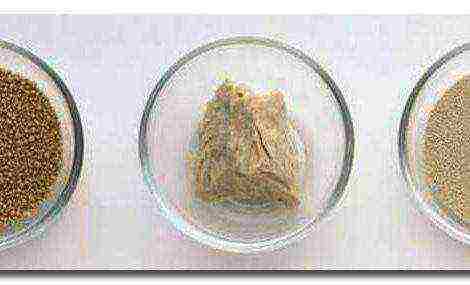Content
An interesting article about spices on the windowsill. What spices, herbs and herbs can be grown on an ordinary windowsill at home, the choice of variety and the rules for caring for plants.
By the end of winter - early March, there is often a desire to grow and collect the first fresh greens.
Experienced summer residents sow seeds at this time - as a rule, no later than mid-March, in order to admire the lush seedlings already in the midst of spring.
Nevertheless, even at home, with a little experience, you can easily grow spices on the windowsill.
What varieties of herbs are ideal for home care and how to grow them correctly - we will tell you in this article.
The best spices and herbs for growing on a windowsill
The optimal solution for home seedlings are unpretentious herbs. We often eat them by adding dried herbs / fruits / roots of these plants to a variety of dishes.
Spices on the windowsill - video
We suggest starting your acquaintance with the information by watching this very interesting and useful video.
Let's take a look at the most popular herbs that are easy to grow at home:
-
Dill
This classic spicy herb is great for both a garden bed and a small home greenhouse.
Variety selection: greens on the windowsill grow much slower than garden greens, and therefore it is worth choosing early ripening varieties.
So, to harvest in a month, pay attention to the "Grenadier", "Gribovsky", "Richelieu".
Late-ripening varieties are distinguished by more lush greenery and a concentrate of nutrients, however, they take much longer to grow.
Sowing: seeds pre-soaked for a day are planted in well-moistened soil. Seeds are planted to a depth of 1-2 cm (in prepared grooves) in small beds, the distance between which is 10 cm. Cover the seed pot with plastic wrap and do not remove it until the first strong shoots (time for shoots is 5-8 days).
Care: dill is extremely fond of water, but does not tolerate its stagnation. Therefore, provide your greenery with reliable drainage, daily watering (ideally with a spray bottle), and a sunny, warm place.
Advice: for even growth and constant renewal of fresh grass, sow new seeds every 3-4 weeks.
You can read more about dill on the windowsill in this article.
-
Parsley
A universal spice for all seasons.
Variety selection: if you value parsley for its medicinal roots, choose "root". Of the early varieties, "sugar", "fruitful", "leafy" are good.
Sowing: Unlike dill, for which soaking is not essential, parsley needs to be soaked daily for 7 days (the seeds are placed in cheesecloth, moistened and ventilated every day).
The prepared seeds are traditionally planted in beds, cover the pot with polyethylene and wait for the first shoots to appear.
Care: parsley should be watered carefully and moderately (every 3 days), maintain a warm room temperature and avoid drafts.
Advice: try to thin out young shoots so that the distance between them is a few cm. This will ensure healthy growth of the greenery.
For more information about growing parsley on the windowsill, read this article.
-
Rosemary
One of the main herbs in the Mediterranean. Perfectly complements main courses, desserts and pastries with fresh or dried sprigs.
Variety selection: Of all the known varieties of rosemary, the most suitable for the home is “Fragrant” rosemary.Also, the plant can be propagated by cuttings.
Sowing: Growing rosemary from seed is recommended in March or early fall. It is worth preparing the seeds in the same way as parsley (soaking), planting them in moist fertilized soil and waiting for shoots (it may take 25-30 days).
You can read more about how to grow rosemary on a windowsill in this interesting
article
Care: since the plant is extremely thermophilic, it needs a well-lit area. Rosemary should be sprayed generously and watered with a spray bottle. When seedlings reach 8-10 cm, it is better to plant rosemary plants.
Advice: If you want to add flowers to the spices on the windowsill, keep the rosemary cool (at least 10 degrees) and minimal watering. It is not necessary to collect leaves during this period.
Remember that rosemary seeds have a low germination rate and this must be taken into account - take seeds from trusted producers.
-
Basil and mint
These aromatic herbs belong to the same family and need similar growing conditions.
Variety selection: there are 2 main types of mint - "Pepper" and "Curly", the first of which is a strong medicinal plant, and the second is easily grown on the windowsill as a spice. A versatile and unpretentious variety of basil for the home - "one-year".
You can read more about how to grow basil.
here
, but about mint
here
Sowing: these spices are easy to grow from seeds, planting them in thin beds to a depth of about 0.5-1 cm. The seeds of these plants are small, so they do not need to be soaked.
Care: As herbs in the Mediterranean climate, spicy basil and mint require high humidity, sunshine and warmth. Herb pots are freed from the insulation film only after the formation of strong shoots.
Tip: try to plant herbs that are close in terms of growth in the same loggia. Mint, tarragon, basil, celery, marjoram will make good friends.
-
Onion and garlic
Speaking of unpretentious herbs, it is worth noting onions and garlic.
Almost any variety of these plants can be easily grown from the bulbs and cloves themselves, having previously immersed them in half in a container with water, and, when the first greens appear, planting them in separate cups or pots.
Like watercress, these herbs need frequent but moderate watering and can even be grown by children.
How to grow chives on a windowsill, read this interesting article
-
Oregano and thyme
Read more about how to grow oregano on a windowsill in this very interesting
article
... About thyme
here
Universal tips for seedlings on the windowsill
- To grow spices, use a special soil for vegetable crops with the addition of peat, sand and minerals;
- To avoid buying additional seeds, just wait for the plants to bloom (do not cut the center stem of the herbs for this) and harvest the ripe seeds. This can take a long time, but gardeners with a bountiful harvest do just that;
- Make the process of growing your home garden fun and enjoyable: pick up bright pots (even ready-made kits for creative gardening are sold), arrange original compositions of herbs in sachets, ceramic cups, on beautiful coasters, using other creative crafts. This will complement the already bright spices on the windowsill with appetizing colors.
Try to grow your own spices on the windowsill and have a Lush harvest!
sources
|
|
A vegetable garden on the windowsill: what spicy herbs can be grown at home Top list of unpretentious, but very tasty, healthy and beautiful plants
1 June 2015
Among the huge variety of plants that are grown at home, there is a fairly representative group, to which the well-known maxim "combine business with pleasure" can be safely attributed. These are spicy herbs: they are pleasing to the eye, and the whole family is provided with fresh herbs all year round.To arrange a home garden on the windowsill is, in fact, very simple, even a beginner can handle it: you need to buy grass seeds, purchase special soil, prepare it for planting, get beautiful pots, plant plants according to the instructions on the package, and then provide easy care - water, spray, fertilize, cut off inflorescences. We have compiled a top list of popular herbs that can be grown very successfully and effortlessly on a windowsill. 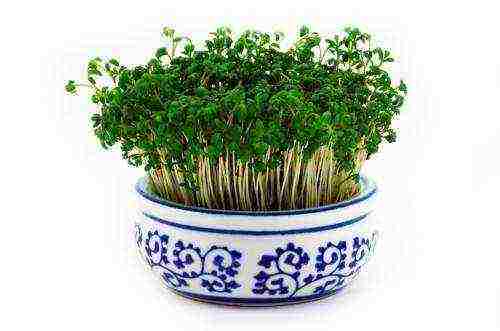 Watercress. It is the fastest growing and one of the easiest crops to grow on a windowsill. Watercress is so unpretentious that it is often grown in a layer of damp cotton wool or damp gauze folded in several layers. Watercress has a subtle pleasant smell and contains many vitamins and other health benefits. To ensure a continuous supply of watercress to the family table, crops are planted weekly and the harvest can be removed when the shoots are 5 cm tall. For the watercress to be juicy and crunchy, it must not only be watered, but also sprayed from time to time. Watercress is consumed raw: added to salads, used in soups and sauces.
Watercress. It is the fastest growing and one of the easiest crops to grow on a windowsill. Watercress is so unpretentious that it is often grown in a layer of damp cotton wool or damp gauze folded in several layers. Watercress has a subtle pleasant smell and contains many vitamins and other health benefits. To ensure a continuous supply of watercress to the family table, crops are planted weekly and the harvest can be removed when the shoots are 5 cm tall. For the watercress to be juicy and crunchy, it must not only be watered, but also sprayed from time to time. Watercress is consumed raw: added to salads, used in soups and sauces.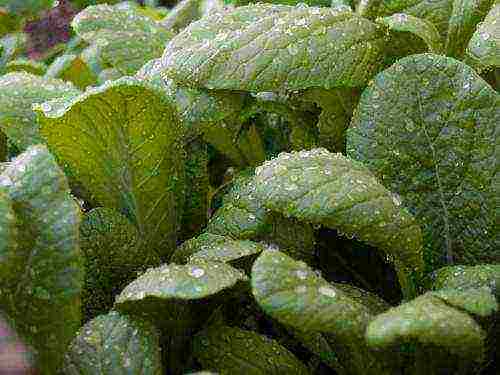 Leafy (salad) mustard. The technology for growing mustard leaves is generally similar to that used for watercress. Sometimes this culture is even sown mixed with watercress in one pot - beautiful ornamental shoots are obtained, and after 7-10 days - you can already cut the vitamin mix from greens for salads, sauces, soups and sandwiches.
Leafy (salad) mustard. The technology for growing mustard leaves is generally similar to that used for watercress. Sometimes this culture is even sown mixed with watercress in one pot - beautiful ornamental shoots are obtained, and after 7-10 days - you can already cut the vitamin mix from greens for salads, sauces, soups and sandwiches.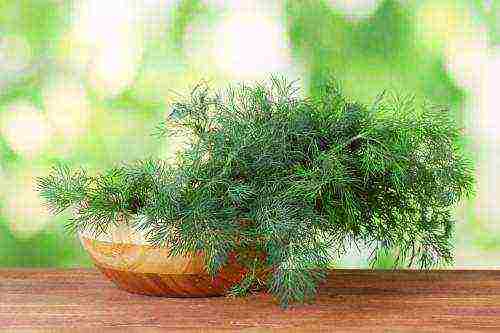 Dill. A well-known, beloved and widely used seasoning. In autumn and winter, dill is grown indoors, and in the warm season, it feels great on the balcony. The seeds are planted in boxes or pots, and with the emergence of shoots, the dill needs to be thinned, leaving an interval of 2-3 cm between the stems. Dill is good in all respects, but the harvest will take a long time - from 25 (early varieties) to 35-40 days. The most popular indoor varieties are Armenian-269, Gribovsky, Uzbek-243, Kaskelen, etc.
Dill. A well-known, beloved and widely used seasoning. In autumn and winter, dill is grown indoors, and in the warm season, it feels great on the balcony. The seeds are planted in boxes or pots, and with the emergence of shoots, the dill needs to be thinned, leaving an interval of 2-3 cm between the stems. Dill is good in all respects, but the harvest will take a long time - from 25 (early varieties) to 35-40 days. The most popular indoor varieties are Armenian-269, Gribovsky, Uzbek-243, Kaskelen, etc.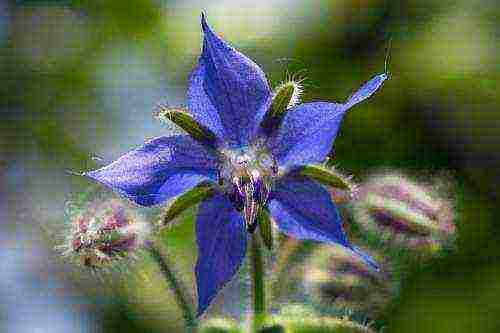 Borago. This is a very beautiful plant with blue flowers, its aroma resembles the smell of fresh cucumber, which explains its second name - cucumber herb. Borago is an unpretentious and fast-growing plant, shoots appear after 10-12 days, and after four weeks it can be plucked and used for its intended purpose - add leaves to salads and all kinds of cold vegetable dishes, and decorate these dishes with flowers. By the way, the ancient Greeks and Romans highly appreciated borago, they considered it a healing plant and used it to strengthen the fortitude, courage and stamina.
Borago. This is a very beautiful plant with blue flowers, its aroma resembles the smell of fresh cucumber, which explains its second name - cucumber herb. Borago is an unpretentious and fast-growing plant, shoots appear after 10-12 days, and after four weeks it can be plucked and used for its intended purpose - add leaves to salads and all kinds of cold vegetable dishes, and decorate these dishes with flowers. By the way, the ancient Greeks and Romans highly appreciated borago, they considered it a healing plant and used it to strengthen the fortitude, courage and stamina.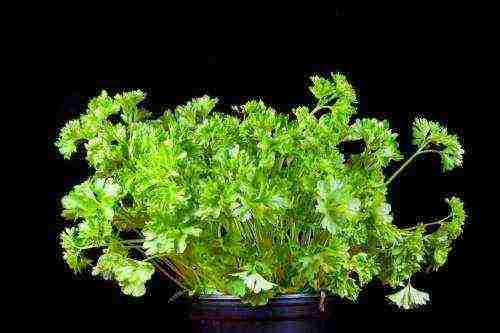 Parsley. Another regular guest on the table of Russians and one of the most popular garden and home crops. You can grow parsley both from seeds and by distilling from rhizomes (the second method will give a faster result). Parsley is quite demanding - it needs balanced watering, plenty of light and a warm room. There is flat-leaved parsley and curly parsley. It is curious that almost omnivorous Chinese use curly parsley only as a decoration for dishes, and they are very surprised when they see that Russians are happy to eat this "decorative" herb.
Parsley. Another regular guest on the table of Russians and one of the most popular garden and home crops. You can grow parsley both from seeds and by distilling from rhizomes (the second method will give a faster result). Parsley is quite demanding - it needs balanced watering, plenty of light and a warm room. There is flat-leaved parsley and curly parsley. It is curious that almost omnivorous Chinese use curly parsley only as a decoration for dishes, and they are very surprised when they see that Russians are happy to eat this "decorative" herb.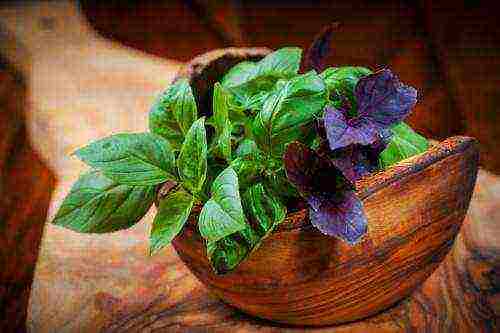 Basil. This pampered southerner with green and purple leaves is quite demanding on heat (the optimum temperature for him is + 25-28 degrees), and he must be watered exclusively in the morning. It is grown at any time of the year from seeds, for better bushiness and a brighter taste, it is advisable to more or less regularly prune the upper young shoots. Experienced home gardeners often plant several different colored types of basil in one container, and a very interesting composition is obtained.Basil contains a lot of essential oils, and besides, mosquitoes don't like it, so you can use the plant as a protection against night attacks of insects.
Basil. This pampered southerner with green and purple leaves is quite demanding on heat (the optimum temperature for him is + 25-28 degrees), and he must be watered exclusively in the morning. It is grown at any time of the year from seeds, for better bushiness and a brighter taste, it is advisable to more or less regularly prune the upper young shoots. Experienced home gardeners often plant several different colored types of basil in one container, and a very interesting composition is obtained.Basil contains a lot of essential oils, and besides, mosquitoes don't like it, so you can use the plant as a protection against night attacks of insects. Coriander (cilantro). This popular seasoning is very unpretentious, coriander is easily grown from seeds, does not require special conditions, the main thing is to prevent the soil from drying out and stagnant water. For sowing, coriander seeds of the first and second years are taken, seeds older than two years have poor germination. The coriander begins to germinate 20-25 days after planting. If you are not lazy, then for faster germination, the seeds need to be soaked in aloe juice, which is a natural growth stimulant for them.
Coriander (cilantro). This popular seasoning is very unpretentious, coriander is easily grown from seeds, does not require special conditions, the main thing is to prevent the soil from drying out and stagnant water. For sowing, coriander seeds of the first and second years are taken, seeds older than two years have poor germination. The coriander begins to germinate 20-25 days after planting. If you are not lazy, then for faster germination, the seeds need to be soaked in aloe juice, which is a natural growth stimulant for them.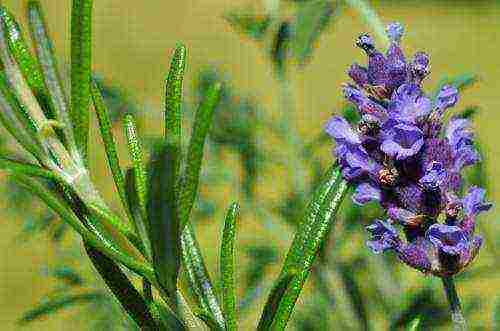 Rosemary. It is a highly aromatic evergreen bushy plant with fine needle-like leaves. The spice can be bred with seeds, but the stalk takes root better - it must be placed in water, and as soon as the roots appear, immediately transplanted into the ground. And if you don't feel like doing this, you can generally get it in a pot at a flower shop. Rosemary loves sunlight, but does not particularly respect water - over-watering can harm its roots. In spring and early summer, rosemary blooms with pretty purple, light pink or white flowers.
Rosemary. It is a highly aromatic evergreen bushy plant with fine needle-like leaves. The spice can be bred with seeds, but the stalk takes root better - it must be placed in water, and as soon as the roots appear, immediately transplanted into the ground. And if you don't feel like doing this, you can generally get it in a pot at a flower shop. Rosemary loves sunlight, but does not particularly respect water - over-watering can harm its roots. In spring and early summer, rosemary blooms with pretty purple, light pink or white flowers.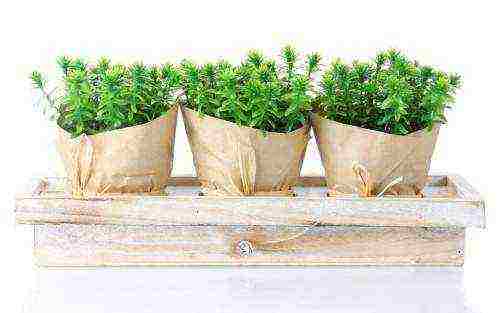 Thyme (thyme). It is a perennial shrub with a creeping stem and flowering branches. Its leaves are small, oval; at the ends of the branches, small flowers of pink or purple color are collected in small inflorescences, emitting a strong and pleasant aroma. Thyme oil contains very useful organic compounds, mineral salts and vitamins. You can grow thyme by seed or dividing the bush. In cooking, thyme is used in the preparation of meat and poultry, added to sauces using tomatoes. It is also a popular addition to tea, thyme tea is a hit in many national cuisines.
Thyme (thyme). It is a perennial shrub with a creeping stem and flowering branches. Its leaves are small, oval; at the ends of the branches, small flowers of pink or purple color are collected in small inflorescences, emitting a strong and pleasant aroma. Thyme oil contains very useful organic compounds, mineral salts and vitamins. You can grow thyme by seed or dividing the bush. In cooking, thyme is used in the preparation of meat and poultry, added to sauces using tomatoes. It is also a popular addition to tea, thyme tea is a hit in many national cuisines. P.S. Use herbs to make sachets and flavorings for olive oil and vinegar. Besides eating fresh and dried, you can use your herbs in several other qualities. For example, a mixture of dried aromatic herbs can be sewn into special beautiful sachets and hung in rooms to create a pleasant scent. You can also insist on homemade herbs olive oil and vinegar; a beautiful bottle with such oil can even be a great hand-made gift for your friends.
P.S. Use herbs to make sachets and flavorings for olive oil and vinegar. Besides eating fresh and dried, you can use your herbs in several other qualities. For example, a mixture of dried aromatic herbs can be sewn into special beautiful sachets and hung in rooms to create a pleasant scent. You can also insist on homemade herbs olive oil and vinegar; a beautiful bottle with such oil can even be a great hand-made gift for your friends.
Article views: 11049
logo
Fashion Clothes
+7 heading
BeautyHairHair DyeingHoliday Hairstyles
+13 headings
Horoscopes
+8 headings
BabiesPregnancy Calendar
+15 headings
RecipesPancake RecipeSaladsRecipe of the Day with PhotosDrinks and CocktailsBaking
+17 headings
PsychologyIn harmony with yourselfFulfillment of desiresPersonal growthFrom soulsHow to increase self-esteem
+23 headings
Woman's healthWomen's healthMenstruationThrushCystitisClimax
+15 headings
InteriorPetsInteriorHouse StyleDecorationHoliday Decor
+12 headings
How to Lose WeightFashion DietsFitness and Exercise
+5 headings
News TodayFood NewsHealth NewsCelebrity NewsBeauty NewsFashion News
+4 headings
WorkRecipe for SuccessYour CareerPsychology of SuccessOffice WorkEducation
+3 headings
CelebritiesGreat PeopleThe Private Lives of StarsInterviews
+1 heading
TestsDiet & FitnessHome & HobbiesHealthCareer & MoneyBeauty & Style
+4 headings
Many housewives prefer to grow herbs on the windowsill. This solution cuts costs, it is convenient and provides constant access to vitamins, which is especially important in winter. Plant seeds or potted sprouts can be bought in specialty stores, markets, or ask friends. Or, before the onset of frost, you can transplant plants from your garden. For the first planting, it is better to prefer early varieties in order to assess the result faster, such as thyme or basil.
Growing conditions for herbs
The beauty of growing herbs is freedom of creativity and it is possible to create a kingdom of fragrant greenery on the kitchen windowsill. You can deviate a little from the prescribed rules, there will be no harm, there are no strict prescriptions. For example, for growing herbs, you can choose any container, experiment with shapes and designs.
It can be an old cup, kettle, food packaging.
But there are also preferences for different types of greens. A container is best for growing green onions so that only the rhizome is covered with water. You can also use a narrow glass jar. Other plants, such as thyme, dill, coriander, prefer wide, low containers.
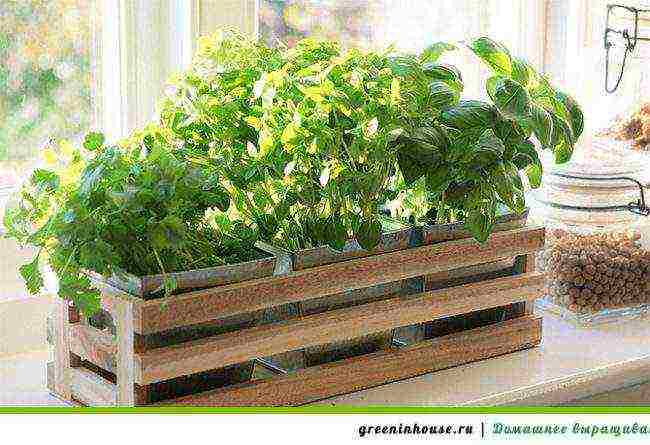 back to contents ↑ Drainage device
back to contents ↑ Drainage device
For many herbs, such as parsley, dill, thyme, lettuce, and many more, a 5-liter plastic bottle will work well. You can also take a bottle of a different size. Small holes for plants are cut in rows on one side of the bottle. Then a layer of drainage should be poured onto the bottom of the container so that it does not reach about 1 or 2 cm to the first row of holes. Expanded clay or gravel is usually used for drainage, making sure that the layer thickness does not exceed 3-4 cm.
Then a layer of soil is poured onto the drainage up to the first holes and plant bulbs are placed in them (holes) so that the growth point protrudes slightly outward. Then repeat the procedure until the end of the rows and complete filling of the bottle. But drainage is placed only at the bottom of the bottle.
When using soil, the importance of drainage must be remembered as it helps to form a healthy root system. At the bottom of the container, lay fine pebbles, expanded clay or just a layer of coarse sand in an even layer. There must be either drainage holes or a drainage layer under the ground. Although they can be combined.
back to contents ↑ Seed selection
The process of selecting and planting seeds is a little more complicated, it requires at least minimal experience. The bottle is prepared in the same way, but the seeds are planted immediately into the holes after filling the bottle. This method is for herbs that do not require a lot of light during germination, such as white mustard, dill, thyme, lettuce, parsley. Before seedlings emerge, the holes need to be covered with something to maintain heat and moisture.
And special pots and cartridges for growing herbs are sold in stores, they are already equipped with everything you need, you just need to water.

Pots or other containers should be placed on a stand to protect the rhizomes from drafts.
to the content ↑ Selection of soil and its fertilization
Most grasses require loose soil with good carrying capacity. The roots will need a lot of moisture and air. It is best to buy primer in a store. Ordinary soil taken from a vegetable garden or lawn may contain pathogens, lack the necessary minerals, and is usually too dense or acidic.
If a suitable soft and loose natural soil is found, and it is not possible to purchase a ready-made soil mixture, it is recommended to heat the ground in the oven to get rid of pest larvae, pathogenic bacteria and pathogenic microflora.
Planting plants is very simple. The main thing is not to bury the seeds deeply, just lightly sprinkle them with earth. Before germination, you need to ensure that the top layer of the earth is moist, especially if it is thyme.
back to contents ↑ How to sterilize the soil?
To sterilize the soil, you need to take a three-liter glass jar and fill it with prepared soil. It does not need to be tamped in a container, it must have air access. Then the jar must be placed in any vessel with water suitable for a long stay in the oven.
Next, the entire structure must be placed in an oven preheated to 180 degrees for an hour and a half. Experienced gardeners recommend watering the soil with any liquid fertilizer after the procedure, to consolidate the success and increase the amount of minerals and nutrients.
back to contents ↑ Substitution of soil
Some plants, such as mustard leaves, watercress or onions, do not require potting soil. A humid environment works best for them. To do this, place a piece of cloth, a layer of cotton wool or even a paper towel in a shallow container, and place watercress and mustard seeds on top. The main thing is to constantly keep the base moist.
Growing green onions is even easier. To do this, place the bulbs in a wide, shallow bowl and fill them with water a third of the height. The water must be changed regularly to prevent stagnation or the beginning of decay processes.
For some plants, a hydrogel can be used instead of soil. It absorbs excess moisture and gives it to the roots of the plant at the right time. It can also be placed in the ground for the same purpose. For planting on a pure hydrogel, mustard, thyme, watercress, valerianella salad are suitable.
back to content ↑ Types of plants and their care
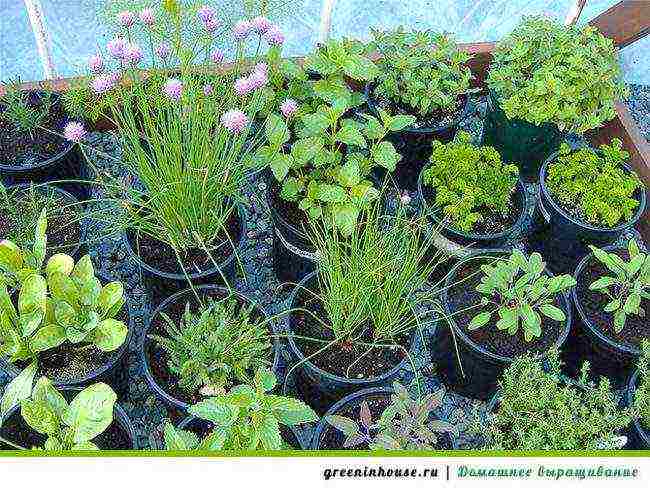
There are a number of plants that housewives prefer to plant on the windowsill in the first place. When choosing seeds or sprouts, it is better to pay attention to early varieties, especially if it is dill, thyme, parsley.
Green onions are very easy to grow, the main thing is to pick up the same size clues and remove excess husks from them. If you cut off the top before planting, then the shoots will appear much faster. You can add a fertilizer with a high nitrogen content to it, but this is not necessary.
It is very easy to grow watercress, it is absolutely not picky about the presence of light, the place of disembarkation, and so on. Harvesting can be carried out already upon reaching a height of 5 cm. Sowing must be tightly to each other.
Mustard leaves can be planted in the same container with watercress, they get along well and equally do not require special care.
Lettuce requires bright light and warmth; without additional lighting, it will not grow.
Dill does not require special care, but it is better to choose early varieties, they give a harvest in just three weeks, otherwise the first shoots will have to wait about 1.5 months.
Parsley requires an abundance of light, daily moderate watering, and a warm environment. It is difficult to grow it at home from seed, but you can try to expel it from the rhizome. Before planting, the seeds must be soaked in warm water for a day.
Basil requires a temperature regime of 25 to 28 degrees. It is better to buy it in the form of seedlings. It requires constant monitoring of moisture levels.
Thyme is a perennial plant. Water the thyme in moderation.
Coriander or cilantro is especially demanding for drainage and constant watering.
But it is very difficult to grow rosemary on your own. It is better to buy ready-made seedlings in the store, and enjoy the exuberant growth of a perennial plant.
back to content ↑ Watering and fertilizing herbs on the windowsill
All herbs on the windowsill, except parsley, need to be watered once a week. All plants, except for watercress, parsley, sorrel and mustard leaves, require good lighting and humidity, use special phytolamps for additional lighting. Humidifiers will help to increase the level of humidity, which is especially important during the heating season.
Any fertilizer for spicy herbs is suitable, but it is better to use mineral fertilizers, you need to apply fertilizing every two months according to the instructions. It is imperative to regularly ventilate the room, some plants, for example, thyme in winter, can be displayed on the insulated balcony. When flowering, the inflorescences must be cut off.
Similar articles:

